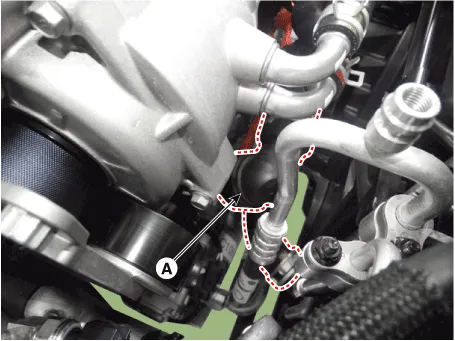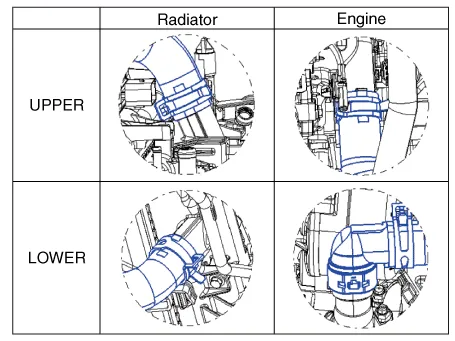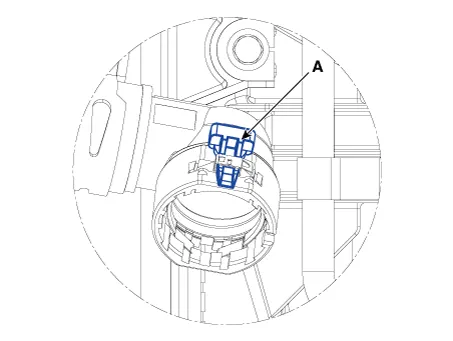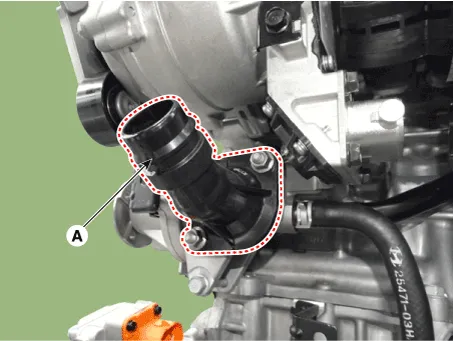Hyundai Ioniq (AE): Cooling System / Thermostat. Repair procedures
| Removal and Installation |
|
| 1. | Drain the engine coolant so its level is below thermostat. (Refer to Cooling System - "Coolant") |
| 2. | Disconnect the radiator lower hose (A).
|
| 3. | Remove the water inlet fitting (A).
|
| 4. | Remove the thermostat (A).
|
| 5. | Install in the reverse order of removal. |
| 6. | Fill the radiator with coolant and check for leaks. (Refer to Cooling System - "Coolant") |
| 7. | Start engine and check for leaks. |
| 8. | Recheck the coolant level. |
| Inspection |
| 1. | Immerse the thermostat in water and gradually heat the water.
|
| 2. | Check the valve opening temperature.
If the valve opening temperature is not as specified, replace the thermostat. |
| 3. | Check the valve lift.
If the valve lift is not as specified, replace the thermostat. |
Components1. Water inlet fitting2. Thermostat
Troubleshooting Symptoms Possible Causes Remedy Coolant leakage• From the thermostat gasketCheck the mounting bolts• Check the torque of the mounting bolts• Retighten the bolts and check leakage again.
Other information:
Hyundai Ioniq (AE) 2017-2022 Service & Repair Manual: Auto Defoging Actuator. Description and operation
DescriptionThe auto defogging sensor is installed on front window glass. The sensor judges and sends signal if moisture occurs to blow out wind for defogging. The air conditioner control module receives a signal from the sensor and restrains moisture and eliminates defog by the intake actuator, A/C, auto defogging actuator, blower motor rpm and mod
Hyundai Ioniq (AE) 2017-2022 Service & Repair Manual: Description and operation
DescriptionIn ordinary cars, the mechanical water pump mounted on the engine for heating purposes is activated to circulate the cooling water, but in hybrid cars, AEWP is used to circulate the cooling water when the engine is not operating. Classification System Cooling water used
Categories
- Manuals Home
- Hyundai Ioniq Owners Manual
- Hyundai Ioniq Service Manual
- Description and operation
- Tailgate Glass
- Fuel Delivery System
- New on site
- Most important about car







